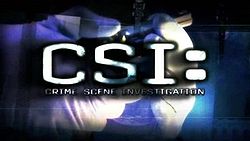When I returned from walking the dog last night, something was wrong. “The TV isn’t working,” my wife said. “The TV, or the cable?,” I asked, hoping that the plasma set hadn’t melted down.

CSI: Grygla
As it turned out, the TV was fine, but the digital cable/DVR was displaying nothing but a pea soup green screen. This is disconcerting, but it’s not a major issue with me. I could probably do without TV. I can live without dancing psuedo-celebrities and I don’t want anything to do with Octomom or Jon +/- Kate.
My wife, on the other hand, has seen nearly episode of the “letter” shows: NCIS, CSI, CSI NY, CSI Las Vegas, CSI Miami, CSI Grygla, etc.
For me, TV has become something just to have on in the background.
So this morning, with the pea green screen preempting The Today Show, I switched over to a device that could represent the future of television. Its unique delivery method makes the cost of distributing video programming to living room TV sets almost nothing. And that’s a very good thing for those interested in new media careers.

The Future of TV
I’m talking about Apple TV, one of a number of set-top boxes that grab audio and video from your wireless router and pass it into your HDTV. So this morning, instead of bearing with the artificial screams of the crowd gathering to hear Al’s weather forecast outside at Rockefeller Center, I was able to watch a podcast of my choice on my Apple TV.
I scrolled through the most popular video podcasts and randomly chose DiggNation, a show hosted by two guys sitting on a couch in their living room talking tech. While their show didn’t have the visual effects of a CSI or the sheer star power of a ballroom dancing Tom DeLay (network TV is so awesome!), it did have something going for it: I was actually interested in what these guys had to say (OK, most of it). It was in HD, too.
I can find a podcast on almost any topic I’m interested in. I can stream them directly, or I can subscribe to shows I like and iTunes grabs them automatically every time a new episode is available.

From the Web to your HDTV
At one time, cable access channels were the only way for an average Joe to make TV programming. Today, it’s much easier to reach an audience in their living room, or on their iPods, or on a mobile device.
All you need is a topic, a cheap camera, a computer and an internet connection. This is going to have major implications on traditional media and advertising.
Yesterday I said that people don’t like to be sold — they want information to help them solve problems. You can’t just make a podcast that’s an ad and expect people to watch. But what you can do is give them a steady stream of useful (or funny, or both) information, and when it comes time for them to get more specialized advice on your topic; you have become a trusted, knowledgable source.
If you’re selling a service, all those free podcasts you created may translate into a sale.
We’ll cover these topics in-depth this fall in the New Media Podcasting and Video Distribution classes. (Not trying to sell you, or anything).
 Our UStream experiment during the Saturday Morning Barndance Christmas party this weekend went off without a hitch.
Our UStream experiment during the Saturday Morning Barndance Christmas party this weekend went off without a hitch.









